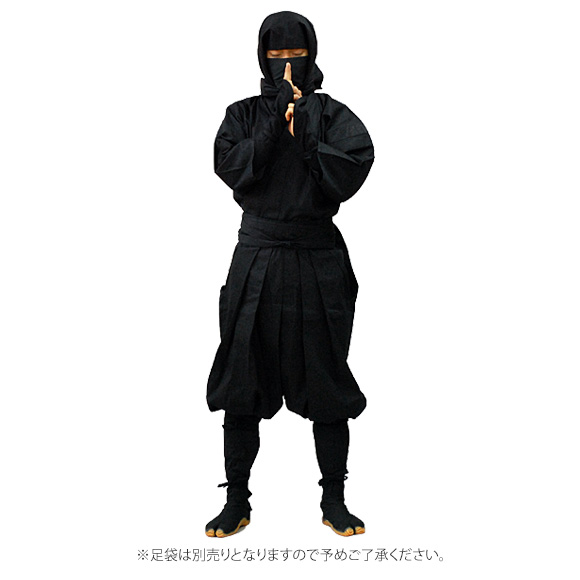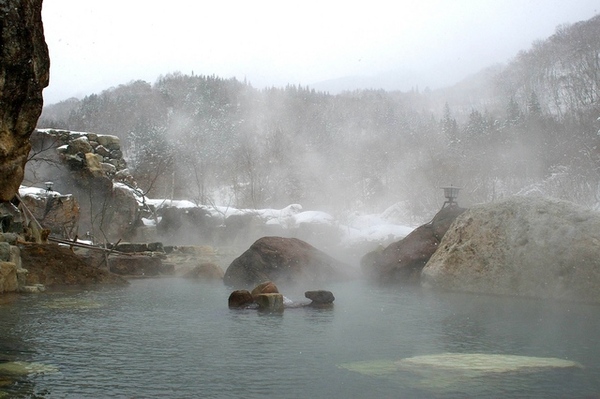
姬路城;Himeji Castleis a hilltop Japanese castle complex located in Himeji, in Hyōgo Prefecture, Japan. The castle is regarded as the finest surviving example of prototypical Japanese castle architecture, comprising a network of 83 buildings with advanced defensive systems from the feudal period.作為日本最具象徵意義,保留度最為完整的城堡,姬路城既是日本政府指定的國寶及國家特別史跡,也是日本首批世界文化遺產之一。姬路城是日本100名城之一,與熊本城、松本城合稱為日本三大名城;由於其保存度較完好,也被稱為「日本第一名城」。有很多時代劇和電影也在這裡進行拍攝,或以姬路城作為江戶城的象徵。 忍者;shinobi was a covert agent or mercenary in feudal Japan. The functions of the ninja included espionage, sabotage,infiltration, and assassination, and open combat in certain situations.[1] Their covert methods of waging war contrasted the ninja with the samurai, who observed strict rules about honor and combat.[2] The shinobi proper, a specially trained group of spies and mercenaries, appeared in the Sengoku or "warring states" period, in the 15th century,[3] but antecedents may have existed in the 14th century,[4] and possibly even in the 12th century (Heianor early Kamakura era)忍者是日本自鎌倉時代至江戶時代(約1185年到1867年)出現的一種特殊職業身份。忍者們接受忍術(即秘密行動的技術)的訓練,主要從事間諜活動。像日本武士的武士道一樣,忍者也遵循一套自己引以為榮的專門規範(忍術)。
忍者;shinobi was a covert agent or mercenary in feudal Japan. The functions of the ninja included espionage, sabotage,infiltration, and assassination, and open combat in certain situations.[1] Their covert methods of waging war contrasted the ninja with the samurai, who observed strict rules about honor and combat.[2] The shinobi proper, a specially trained group of spies and mercenaries, appeared in the Sengoku or "warring states" period, in the 15th century,[3] but antecedents may have existed in the 14th century,[4] and possibly even in the 12th century (Heianor early Kamakura era)忍者是日本自鎌倉時代至江戶時代(約1185年到1867年)出現的一種特殊職業身份。忍者們接受忍術(即秘密行動的技術)的訓練,主要從事間諜活動。像日本武士的武士道一樣,忍者也遵循一套自己引以為榮的專門規範(忍術)。
 忍者;shinobi was a covert agent or mercenary in feudal Japan. The functions of the ninja included espionage, sabotage,infiltration, and assassination, and open combat in certain situations.[1] Their covert methods of waging war contrasted the ninja with the samurai, who observed strict rules about honor and combat.[2] The shinobi proper, a specially trained group of spies and mercenaries, appeared in the Sengoku or "warring states" period, in the 15th century,[3] but antecedents may have existed in the 14th century,[4] and possibly even in the 12th century (Heianor early Kamakura era)忍者是日本自鎌倉時代至江戶時代(約1185年到1867年)出現的一種特殊職業身份。忍者們接受忍術(即秘密行動的技術)的訓練,主要從事間諜活動。像日本武士的武士道一樣,忍者也遵循一套自己引以為榮的專門規範(忍術)。
忍者;shinobi was a covert agent or mercenary in feudal Japan. The functions of the ninja included espionage, sabotage,infiltration, and assassination, and open combat in certain situations.[1] Their covert methods of waging war contrasted the ninja with the samurai, who observed strict rules about honor and combat.[2] The shinobi proper, a specially trained group of spies and mercenaries, appeared in the Sengoku or "warring states" period, in the 15th century,[3] but antecedents may have existed in the 14th century,[4] and possibly even in the 12th century (Heianor early Kamakura era)忍者是日本自鎌倉時代至江戶時代(約1185年到1867年)出現的一種特殊職業身份。忍者們接受忍術(即秘密行動的技術)的訓練,主要從事間諜活動。像日本武士的武士道一樣,忍者也遵循一套自己引以為榮的專門規範(忍術)。
有不少忍者的傳奇故事。忍者盛行於日本戰國時代,效力於大名及封建貴族,執行情報收集﹑刺殺等秘密任務。直到德川幕府將其納入正式編制後,進入最興盛的年代。不過,雖然如此,但正式的史書上對忍者卻只有斷斷續續的支字片語,也因如此,後人對忍者也就有更多的神秘感。
A hot spring is a spring that is produced by the emergence of geothermally heated groundwater from the Earth's crust. There are geothermal hot springs in many locations all over the crust of the earth.是一種由地下自然湧出的泉水,其水溫較環境年平均溫高攝氏5度,或華氏10度以上。在學術上,湧出地表的泉水溫度高於當地的地下水溫者,即可稱為溫泉。
拉麵;Lamian
is a type of Chinese noodle. Lamian is made by twisting, stretching and folding the dough into strands, using the weight of the dough.[1]The length and thickness of the strands depends on the number of times the dough is folded.[1] This unique method of making noodles originated in China.[拉麵,或稱手拉麵、抻麵,做法是將揉好的面團拉長,摺疊,再拉長,反覆若干次,直到麵條足夠細為止。優秀的師傅能將麵條拉得又細又長,口感勁道十足。
武士;Samurai
In Japanese, they are usually referred to as bushi (武士?, [bu.ɕi]) or buke (武家?). According to translator William Scott Wilson: "In Chinese, the character 侍 was originally a verb meaning to wait upon or accompany persons in the upper ranks of society, and this is also true of the original term in Japanese, 武士是10世紀到19世紀在日本的一個社會階級。一般指通曉武藝、以戰鬥為職業的軍人。除了日本及受到漢語語系影響的國家以外,多種語言以日語的「侍」(羅馬字Samurai)來表示。武士的精神被稱為「武士道」

相撲;Sumo
is a competitive full-contact wrestling sport where a rikishi (wrestler) attempts to force another wrestler out of a circular ring (dohyō) or to touch the ground with anything other than the soles of the feet. The characters 相撲 literally mean "striking one another".是日本傳統的體術,由兩名力士裸露上身,互相角力。由神道的神事發展而成,作為專業競技項目,則稱為大相撲。相撲是日本的國技和國際性的武術、格鬥和體育運動。
日本國旗;flag of Japan
The national flag of Japan is a white rectangular flag with a large red disc (representing the sun) in the center. This flag is officially called Nisshōki(日章旗?, "sun-mark flag") in Japanese, but is more commonly known as Hinomaru (日の丸?, "circle of the sun").為一面白色長方形旗幟,旗幟中心為一個紅色圓形,代表太陽。其正式名稱為日章旗(日語:日章旗,Nisshōki)[1],在日本國內常以「日之丸」稱之。

太陽旗;

很好 GOOD.
回覆刪除